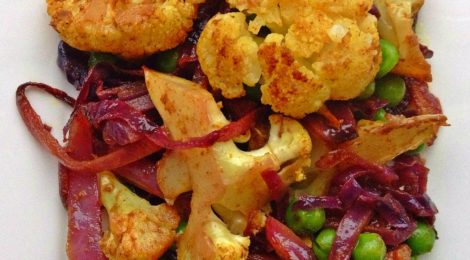
Is your New Year’s Resolution to eat healthy? Go for nutritious Indian options

Eat clean in the new year: steamed brown basmati rice with chick peas curry

Happy New Year! Well folks, it’s that time of year again. The time when you know you’ve overindulged in your eating and drinking during the holiday season, and you must admit to yourself that the time has come to focus again on healthy eating. Well, I’m here to help! In my nutrition practice in London, I am always amazed to see how small changes to diet and nutrition make BIG differences for my clients. So let me take you back to the basics and see how Indian cooking checks many boxes for mindful and healthy eating. The wonder of Indian cuisine and Big Apple Curry‘s recipes is that they are abundant in vegetables, whole grains, legumes, lentils and lean protein.
1. Portion Size
Wherever we look, dinner plates have gotten bigger and bigger as waistlines in many countries have commensurably grown in size. I can safely say that the average plate is now 11+ inches in diameter. Go ahead, measure it! For any meal at any given time, a reasonable size plate should be 7-8 inches in diameter. No more. And that plate, filled only once, should suffice for one meal. Now, the beauty of sharing an Indian meal is that small bowls of Indian delicacies usually adorn the table, allowing for a variety of reasonably portioned foods.
2. The 50/25/25 rule
So, you’re probably thinking, what can you get away with on your plate? It’s really quite simple: 50% vegetables + 25% protein + 25% complex carbohydrates

Source: Habit Hacker
• Half of your plate should be composed of vegetables (yes, the green, orange, red, yellow, and purple stuff). Vegetables in all their goodness provide us with essential antioxidants and nutrients to ward off disease and keep us in good health. Everyone is aware of the “5-a-day” campaign but it takes effort and planning to reach that goal! So when you walk into your local grocery store, think color: carrots, beetroot, avocados, sweet peppers, sweet corn, pumpkin, leafy greens, tomatoes…the list is endless. What to cook? Try a simple roasted vegetable dish that everyone will love: EASY INDIAN ROASTED VEGETABLES
• The 25% remaining on your plate should be a source of protein, which can be found in a wide variety of foods, including poultry, meat, fish, nuts and seeds and all varieties of beans, peas and lentils. As a good rule of thumb, your piece of meat or fish should be about the size of your palm. Indian cooking abounds in recipes with lentils and other legumes (chickpeas, kidney beans, black eyed peas), tofu, and tempeh (fermented soybean) — all excellent sources of vegetable protein. What to cook? Try a new variation on grilled chicken, which is a lean protein and any extra can be tossed into a salad for lunch the next day: EASY INDIAN-STYLE GRILLED CHICKEN
You can also lighten things up and go for vegetable protein instead, using chick peas or red kidney beans: EASY INDIAN CURRY
•The last 25% should include complex carbohydrates, found in cereals and grains such as wheat, rye, corn, oats and rice. They are also in legumes such as peas, beans and lentils. Once again, Indian recipes do an inspiring job combining grains and cereals with pulses and legumes for a complete protein, such as whole wheat chapattis with lentils. What to cook? Brown rice is a go-to whole grain and perfect example of a complex carbohydrate that’s good for you: HOW TO MAKE RICE PERFECTLY
3. Take your time
I know what you’re thinking…who has time to plan out eating? Or even eat regularly at all, when you’re on-the-go all the time and wolf down something whenever you can? We all need to eat nutritious, wholesome things to feed our bodies and minds. Take the time to think about what your body needs, prepare your own food (even if only once a day in the evening or on the weekend) and chew slowly. Eating slowly and chewing your food properly will lead to a better digestion (and less digestive upsets) and a sense of being “fuller” sooner (which also means that you will eat less).
4. Pause on the alcohol, drink water instead
Let’s put aside the holiday wine and beer for now and focus on drinking simple, pure water. Our bodies are composed of 60% water, an essential liquid for the day-to-day functions of our bodies (detoxification, blood and cell composition, urine and stool formation etc.). Our bodies need fresh water to cleanse and replenish our organs, circulatory system, and skin to name a few. So get drinking! Keep a bottle of water in your car, on your desk, on the kitchen counter, on the coffee table. If you see it, you will drink it! And if you get tired of drinking plain water, have some herbal tea or Jasmine tea.
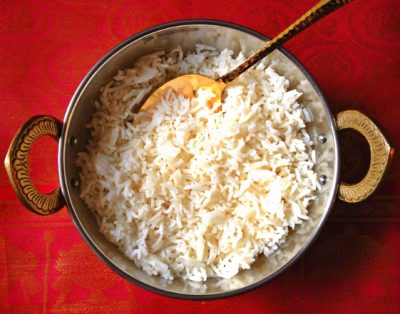



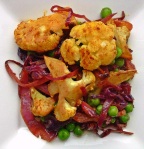


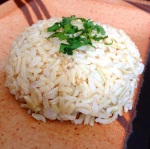


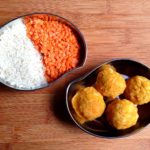
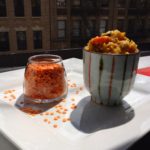

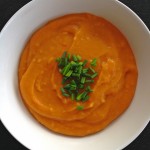
I actually have been trying to find a way to eat healthier this year, and I love how you use Indian food as a method to do that. It’s true that Indian food often involves whole grains and legumes. As for lightening things up with chickpeas, my favorite curry has chickpeas in it. Now that you’ve made me all hungry, I’m probably going out for Indian food with my sister tonight.
Hello Rhianna!
Thanks for coming to Big Apple Curry! Did you and your sister end up going out for Indian food? 🙂
There are many healthy options in Indian cuisine, not the least of which are many varieties of vegetable dishes that are dry-roasted with spices, in addition to different preparations of legumes and lentils. At this time of year, we love to make this dish, which is a South Indian recipe:
https://www.bigapplecurry.com/2014/09/01/south-indian-mango-huli/
If you make anything from the site, do let us know!
Ina